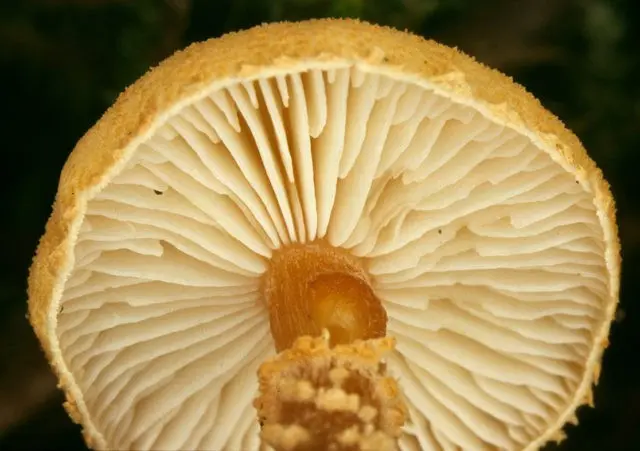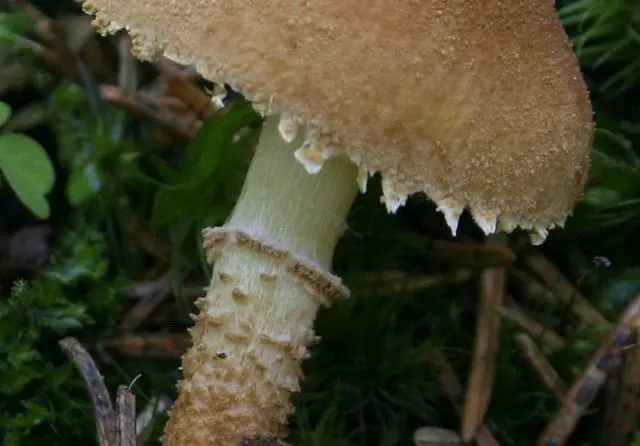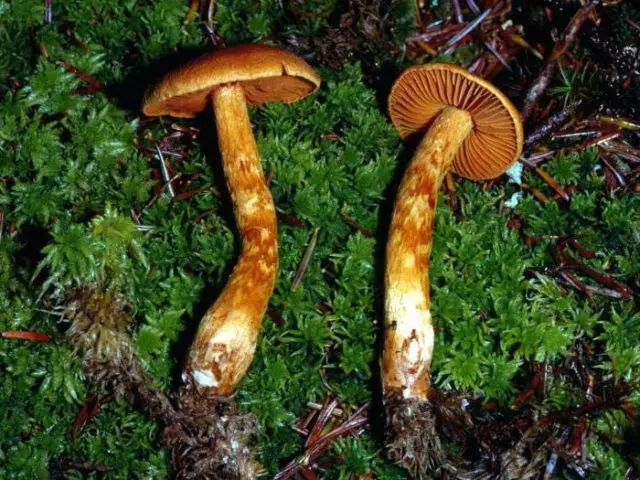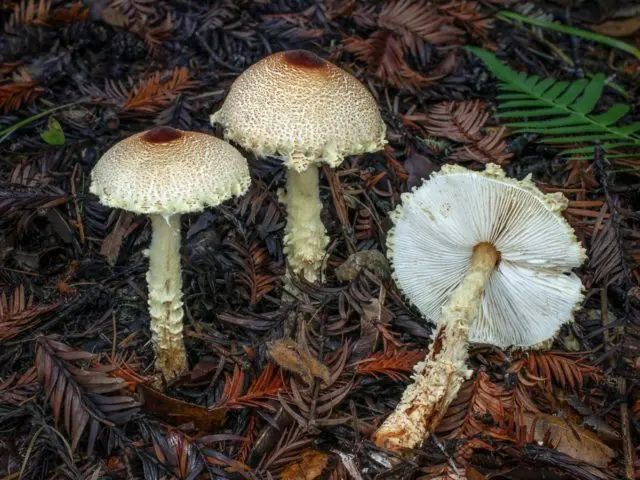Contents
Cystoderma amianthus (Cystoderma amianthinum), also called cystoderm spinosa, asbestos and amianthus umbrella, is an agaric fungus. Found subspecies:
- album – white hat variety;
- olivaceum – with an olive color, found in Siberia;
- rugosoreticulatum – with radial lines radiating from the center.
The species was described for the first time at the end of the XNUMXth century, and the modern name was fixed by the Swiss W. Fayod at the end of the XNUMXth century. Belongs to the extensive Champignon family.
What does cystoderm amianthus look like?

The Amianth Umbrella does not look too impressive, it can be mistaken for another toadstool. The fragile small body of the cystoderm has a rich color, from light sand to bright red, like a well-baked cookie. The hat is initially rounded-spherical, after which it straightens, leaving a noticeable bulge in the central part. The fringed edge can curl inward or outward, or be straightened. The flesh of the body is tender, easily pressed through, light, with an unpleasant, moldy smell.
Cap Description

The cap of cystoderm amianthus is round-conical when it appears. With maturation of the body, it opens, turning into an open umbrella with a convex tubercle at the junction with the leg, and a fluffy edge bent inward. The diameter can be up to 6 cm. The surface is dry, without mucus, rough due to small flakes-grains. Color from sandy yellow to bright orange. The plates are thin, often located. Initially pure white, then the color darkens to creamy yellow. Spores maturing on the surface are pure white.
Description of the leg

The legs of the cystoderm are filled at the beginning of the cycle, as they grow, the middle becomes hollow. Long and disproportionately thin, they reach 2-7 cm in length with a diameter of 0,3 to 0,8 cm. The surface is dry, covered with large brownish scales in the lower part. Pale yellow rings that remain from the bedspread disappear with growth. The color is almost white at the base, yellowish-coffee in the middle part and rich brown near the ground.
Is the mushroom edible or not?
Cystoderma is not poisonous. The amianthus umbrella belongs to conditionally edible mushrooms due to its low nutritional value, watery pulp and unpleasant aftertaste. Hats can be used for cooking second courses, salting and marinating after boiling for a quarter of an hour. The legs have no culinary value.
Where and how to grow
Cystoderma grows in small groups or alone in the temperate zone. Of all the varieties, it is the amaranth umbrella that is most widely distributed in Our Country. It appears from the beginning of August and continues to grow until the end of September-mid-November, until frost sets in. He likes mixed and coniferous forests, next to young trees. It climbs into moss and soft coniferous litter. He loves the neighborhood of ferns and lingonberry bushes. Occurs occasionally in abandoned parks and meadows with forbs.
Twins and their differences
The amianth umbrella is similar in structure and color to some poisonous varieties of mushrooms. It can be confused with representatives of such genera:
- Cobwebs.

- The beautiful one.

To distinguish them, you should consider the hat, stem and color of the plates.
Conclusion
Cystoderma amianthus grows in the temperate latitudes of the Northern Hemisphere. The season falls on the end of summer and all autumn until the first frost. It can be eaten, although the amianth umbrella is reluctantly taken because of the specific taste. Collected specimens should be carefully examined so as not to be confused with similar poisonous mushrooms.











